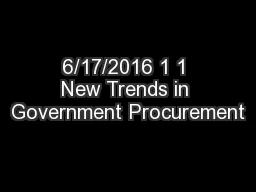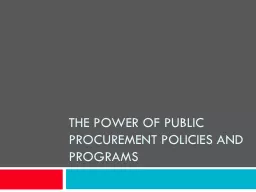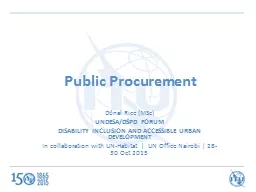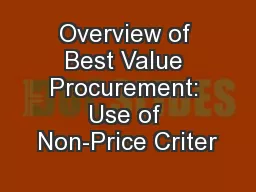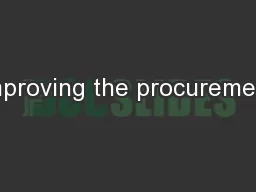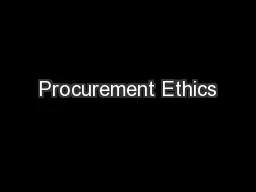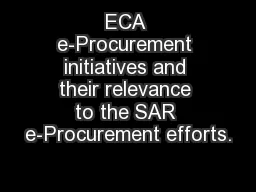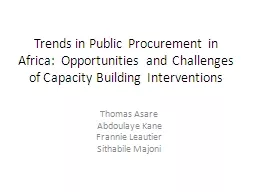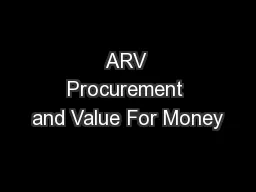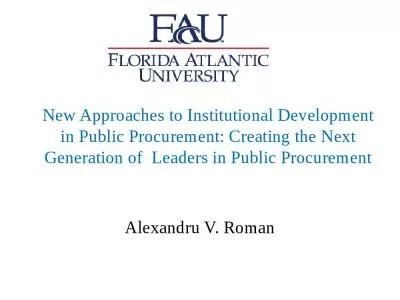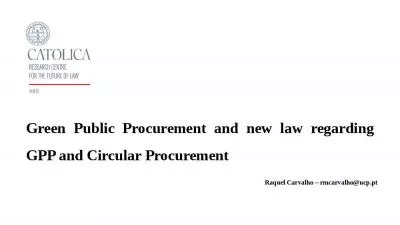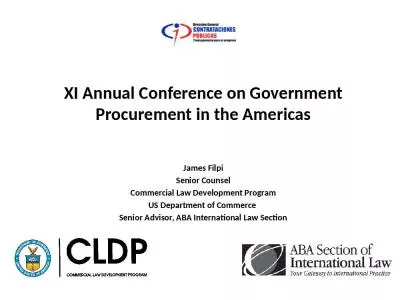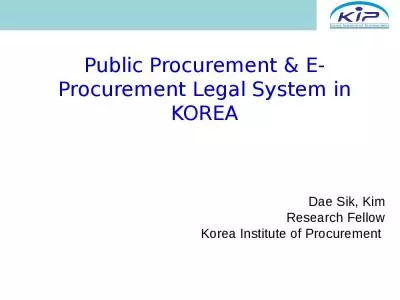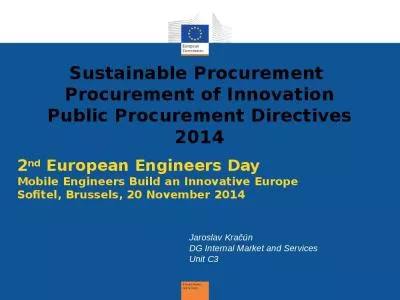PPT-6/17/2016 1 1 New Trends in Government Procurement
Author : karlyn-bohler | Published Date : 2019-02-23
Presented at the ZSPA International Conference and Master Class 15 17 June 2016 6172016 2 Outline of the Presentation General Considerations Public Procurement
Presentation Embed Code
Download Presentation
Download Presentation The PPT/PDF document "6/17/2016 1 1 New Trends in Government P..." is the property of its rightful owner. Permission is granted to download and print the materials on this website for personal, non-commercial use only, and to display it on your personal computer provided you do not modify the materials and that you retain all copyright notices contained in the materials. By downloading content from our website, you accept the terms of this agreement.
6/17/2016 1 1 New Trends in Government Procurement: Transcript
Download Rules Of Document
"6/17/2016 1 1 New Trends in Government Procurement"The content belongs to its owner. You may download and print it for personal use, without modification, and keep all copyright notices. By downloading, you agree to these terms.
Related Documents

